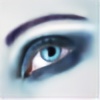HOME | DD
 rbeebephoto — Yosemite-cascade 2bw
rbeebephoto — Yosemite-cascade 2bw

Published: 2008-05-14 01:45:49 +0000 UTC; Views: 721; Favourites: 48; Downloads: 0
Redirect to original
Description
this #2 is actually the same little waterfall as "yosemite cascade 1," along Cascade Creek, but is five weeks later into the Sierra Nevada spring snow runoff. #1 is framed a little more to the right - study the boulder in the cascade to compare.Black-and-white version from the color original.
Related content
Comments: 8

I wish I could get a shot like that. The soft water look. Nice work!!
👍: 0 ⏩: 1

if you look under the "details" notes on the image, down in the "Picture" info, it lists the shutter speed as 1/2 second. There's your clue as to what it takes to record something like this...time. Playing with a tripod or any other means of stable support for the camera (in this case, actually resting on a concrete bridge railing!) and stretching the "time" element of the exposure pair out longer that some little common quickie like 1/200th of a second. How did I do this in the middle of the day? Three things:
1. shoot in MANUAL as opposed to a camera-controlled exposure mode.
2. run the ISO speed down as low as you can go...my camera's is 100.
3. run the f/stop as far up as the lens will go...in this case, f/32.
By doing so, you've forced the camera to need a much longer time frame - shutter speed - to make-up for the small amount of light that small aperature - f/32 - will allow in, so it's a matter of diling the speed down until a decent exposure becomes possible. The camera you use, according to a recent "detail" picture info - a Canon EOS DIGITAL REBEL XTi - is capable of manual exposure, and up to 30 second long exposures.
You can certainly "play" with something like this: try setting a running hose on a chair in your yard, and photograph it in late-day light, shooting in Manual mode, while trying different adjustments. That's the nice thing about shooting digitally: there's no wait to see the reults and no charge for these test shots...whose benefit is to get you seeing something you might not have tried before, thus putting another possible photograohy "tool" into your hands to try. These longer shutter speeds are the "norm" for low-light camera work, including night photography.
Give it a test try...good luck with your effort and results.
👍: 0 ⏩: 0






















